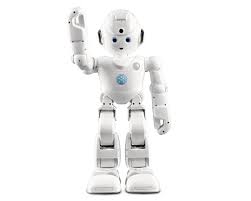It’s a common refrain in senior living that today’s assisted living communities are closer to yesterday’s skilled nursing facilities.
Seekers of Meaning Podcast Posted Online March 7, 2025
What's Next Longevity Deal Talk Episode 32, January, 2025
What's Next Longevity Venture Summit, June, 2025

 Context matters: consider the likely status of people in 10 years. It makes you think. Asked this question recently and pondered. What will be the context at that time? A decade from now, the oldest baby boomers will be 86.
Context matters: consider the likely status of people in 10 years. It makes you think. Asked this question recently and pondered. What will be the context at that time? A decade from now, the oldest baby boomers will be 86.
Comments
What's a "robot"?
This is a great piece and it certainly points to the urgency caused by our aging population and the fact that we already do not have enough caregivers -- paid and unpaid -- to cover existing needs. I whole heartedly agree that technology must play a major role in easing the routine burdens for caregivers.
However, I'd argue that we're surrounded by robots already. If you were to ask my mother about when she was a child, the level of automation in our homes would seem to be a miracle. Heating systems that adjust the temperature on their own; washing machines and driers that decide on their own when your clothes are clean and dry; and microwaves that know when your food is cooked. This is all without even getting into "smart home" technology and connected devices.
Not all "robots" are bipedal humanoids. (Just look at the devices that put cars together these days!) But my point is not so much about definitions as perception. When a technology works well, it "disappears" into the background of our lives. We come to depend on it and don't even notice it until it requires our attention for some reason. We already have "robots" available that can help with specific tasks such as medication dispensing and tracking, or automated fall detection in the home. We need to help seniors, their families, and their caregivers become more aware of the options that are available, and to help create a "pull demand" for new products and services.
Who will pay for these? I believe that the answer is "the people who will pay more if these devices are not in place." Just as insurance companies provide homeowner discounts for smoke detectors, health payers will soon find that it costs less to put some of these devices in the home than it does to pay for the consequences. This is already happening for some chronic diseases, and is slowly moving into the general population as witnessed by the growth of telehealth services.
As always, there will be early adopters among seniors, and some Luddites who will resist any technology. But like automatic transmissions in cars, these devices and services will become so easy and effective and efficient that we will take them for granted, as if they had always been here.
From Keren Etkin via LinkedIn
I bet our homes would have multiple butler robots like the iRobot within 10 years, but ADL assistive robots that will be able to handle frail older adults and do it safely could take a while.
I do expect to have one by the time I'm in my 80s though :)
From Amy Stapleton via LinkedIn
It’s difficult to predict how in-home caregiving robots will evolve, but as you write in your post, the demographic shifts and shrinking workforce are certainly an impetus for innovators to develop solutions. I’d like have a robot helper in 10 years and I’m hoping it’ll have a sense of humor!